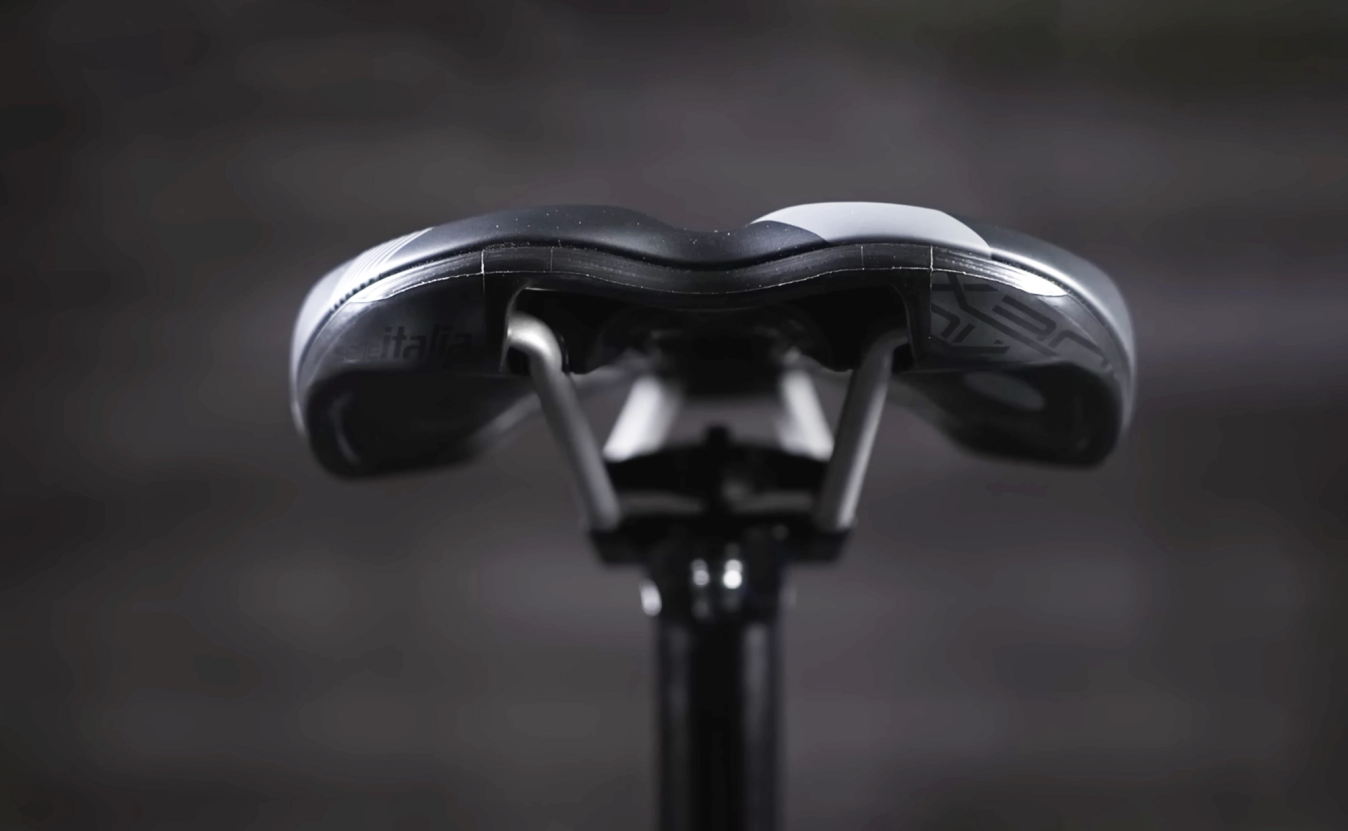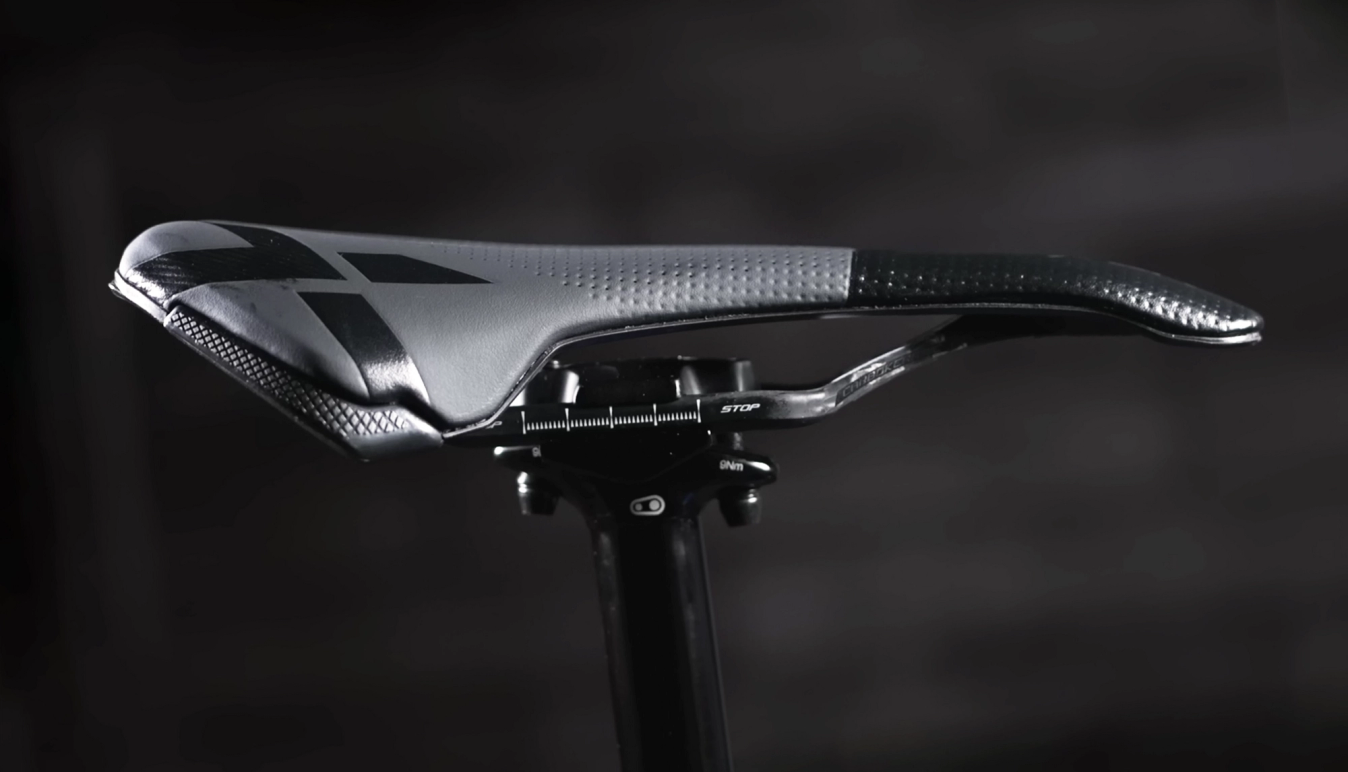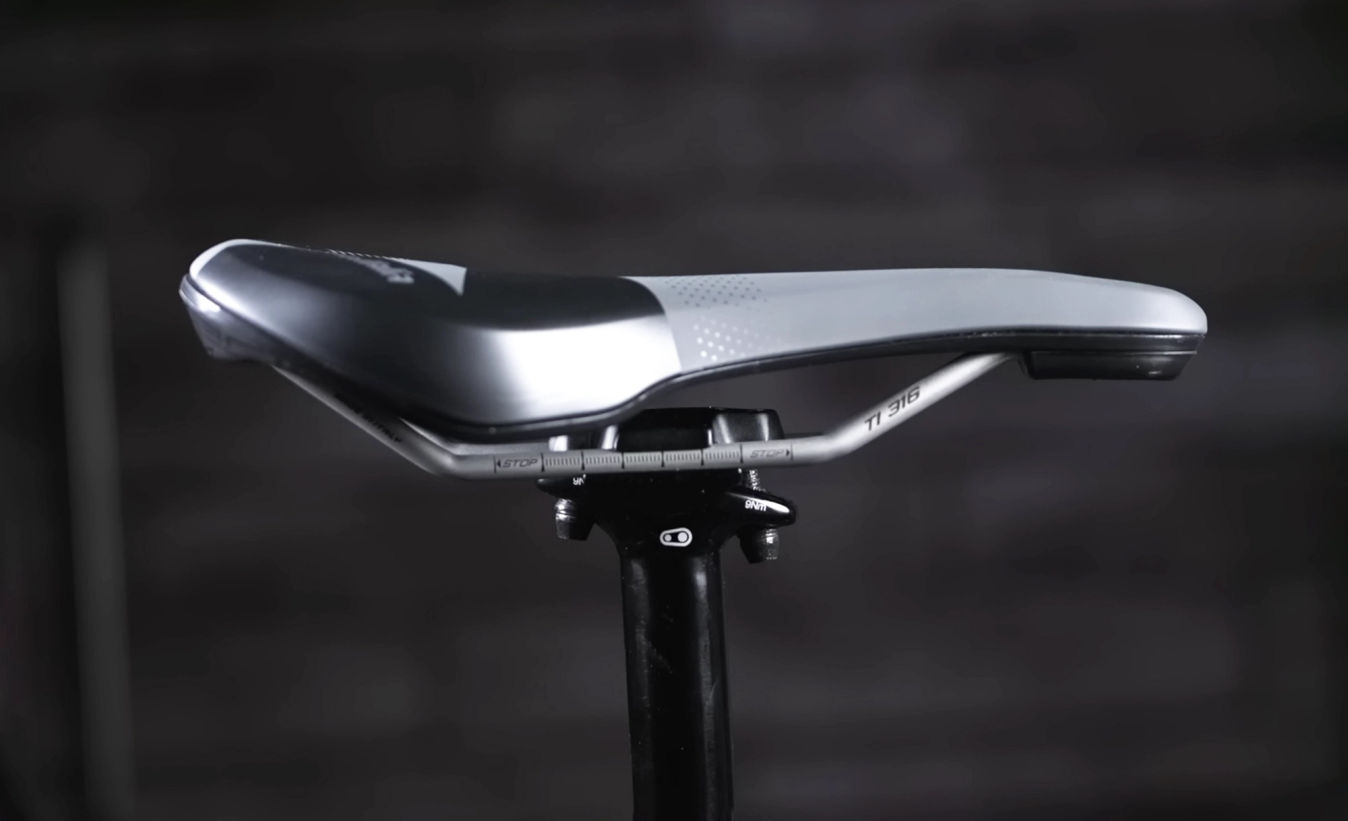How to choose a road bike saddle
A well-fitting saddle is essential for a comfortable bike ride.
James Howell-Jones
Junior Writer
If your saddle isn’t comfortable, you probably need to swap it out for something that fits you better. Thankfully, there are loads of different options, shapes and sizes out there.
To help you navigate the various options, we’ve laid out all the things that set saddles apart from each other – width, padding, cuts – and how these differences affect what saddle you might need.
Why different people need different saddles
When you sit on a bike, your weight should be resting on your sit bones, which are part of your pelvis. But there are a couple of things that make that tricky to get right for everyone.
Firstly, sit bones come in different shapes and sizes, and riders sit on different parts of their sit bones depending on their position on the bike.
Secondly, there’s some quite important soft tissue that lives in between your sit bones. A well-fitting saddle will keep the rider’s weight off the soft tissue, and keep it on the sit bones instead.
Some of these anatomical differences are tackled by saddle brands by making male and female specific saddles, but increasingly, saddles are being branded as unisex, with different size options for people of any gender to use.
Padding
Big, heavily padded saddles are typically designed for leisure and town bikes. Town bikes have an upright position, so most of the rider’s weight is on their bum. With all that weight resting on the saddle, a wide surface and extra padding help with comfort.
Road bike saddles don’t need anywhere near as much padding to be comfortable. This is mainly because, on a road bike, your weight is distributed between the saddle, the pedals and the handlebars. The other thing to remember is that road cyclists usually wear padded shorts, so the saddle itself can be a little firmer.
A firmer saddle gives road cyclists a more sturdy base to pedal from, and ensures that only your sit bones are resting on the saddle, not soft tissue. They take a bit of getting used to, but a firm saddle can actually be far more comfortable if it fits you right.
Shape
The most important thing to know about saddles is that comfort is mostly dictated by the shape of the saddle and not the amount of padding on it. Unfortunately, the only real way to work out what shape works for you is by trial and error. Find a bike shop with some test saddles and give some different shapes a go.
1. Curved or flat (side to side)
Have a good look at any saddles you’re trying out from behind. Do they look flat, or do they slope downwards on the edges? It’s only through giving a few saddles a try that you’ll be able to tell what’s best for you, but it’s a good thing to make a note of when testing.

GMBN
Curved saddles suit some riders better than others

GMBN
Some riders prefer flatter saddles
2. Wavy or flat (back to front)
Now, look at the saddle from the side. Is it flat, or does it bend slightly to curve around the body? A flatter saddle gives the rider the ability to move on the saddle, whereas a curved saddle keeps the rider nestled into the centre.

GMBN
Flat saddles suit riders who like to move around on the saddle

GMBN
Curved saddles keep the rider planted in the same position
Width
After considering the saddle’s shape, the next thing you need to be aware of is width. Saddles come in different widths, usually. Sometimes this is given as a simple ‘small’, ‘medium’ or ‘large’, but usually it’s given in millimetre measurements.
There are a couple of reasons why we need different width saddles.
Firstly, different people have different width sit bones, so need saddles that are the right width accordingly. But working out your saddle width isn’t as simple as sitting on a ruler – in fact, the biggest factor when deciding the right saddle width is the position you adopt on your bike.
The sit bones are part of the pelvis, and as you roll forwards on the bike to reach the handlebars, your pelvis rolls forward too. In an aero position, or even a moderate road cycling position, you’re not actually sitting on your sit bones, but your pubic rami. The gap between the pubic rami bones gets narrower the further forward you lean, so the saddle width you need changes depending on how aero your position is.
I know, we wish it could be simpler too.
Cutouts

GMBN
A cutout or pressure relief channel can help take weight off soft tissue
Some saddles have cutouts or pressure relief channels, which is when padding is removed from the centre line of the saddle to take pressure off your soft tissue. A lot of riders swear by these kinds of saddles, but that doesn’t mean they’re better for everyone.
Our advice would be to get the shape and width of the saddle right first, and then think about whether you could be more comfortable with a cutout. Like everything with saddles, there are plenty of different shapes and sizes of cutout and pressure relief channels to choose from.
Short-nosed saddles

GCN
Short nose saddles are stubbier than normal saddles, and usually feature a large cutout
This is a new breed of saddle that has exploded in popularity over the past few years. Short-nosed saddles are usually a few centimetres shorter than a traditional saddle, and have large cutouts.
These are intended for riders who sit in a low, aero position. The thinking is that by having a shorter nose and a big cut out for soft tissue, it enables you to sit with your pelvis rotated further forward, which opens up your hip angle and better engages your most powerful muscle groups in a wider range of motion, so you get better glute activation.
Lots of riders absolutely love these saddles, but others find them too wide, and experience chafing or interference with the inside of their thighs. Test one out to see how it feels for you.
Time trial saddles
This next type of saddle is specifically designed for time trial or triathlon bikes, and the extreme position their riders adopt. Riding in a really aggressive aero position puts a lot of pressure on your soft tissue, so to relieve that pressure, a lot of these saddles have effectively had the front of the saddle lopped off. This makes them look a bit weird, but it means that riders are still putting weight through their pelvis, not their soft tissue.
Materials

GCN
At the cutting edge of saddle design, manufacturers use 3D printed parts
Saddles can be made from loads of different materials, and it’s worth knowing the reasons for picking one material over another. Essentially, more money means less weight.
Incidentally, if you are looking to save weight on your bike, saddles are one of the most cost-effective ways to do so. It's a lot more cost-effective saving 100 grams on a saddle than on a set of wheels or a frame.
Saddles come in a hierarchy with the cheapest and heaviest at the bottom, and the most expensive and lightest at the top. The good news is that it doesn't matter where you buy a saddle within that hierarchy, the shape and the profile of that saddle model usually remains the same. What differs is the material, with cheaper saddles using materials like steel and plastic, and pricier saddles using materials like carbon and titanium.
Finally, spending more will get you more advanced types of padding. Recently, saddle brands have developed fancy 3D-printed padding, with different material properties at different points in the saddle. As you can imagine, that kind of thing is only available at the very top end, and the chances are, you don’t need it. As with the shell and rail material, these high-end printed saddles still have the same shape as the lower spec versions.
Compatibility
If you’re considering splashing out on a bling saddle with carbon rails, just make sure your seatpost can accommodate it first. Unlike basic round metal tubes, carbon rails are oval, and not all seatpost clamps can fit them in. So be aware of that before you remortgage your house for that carbon beauty.
Finding the right one
With so many factors determining different saddle shapes, you would be lucky to make the right choice just from looking at photos online. Find a bike shop where you can try different saddles, and give a few a go. Some bike shops will even have some test saddles lying around that you can take for a spin.
They also might have a special device to measure the shape of your bum, but remember, that measurement isn’t the be-all-and-end-all – your riding position makes a big difference to width too.
Different brands have different measuring systems. Selle Italia has its ID match system, Specialized has its body geometry system, and other brands have their own jargon for different shapes and sizes. It might sound like they’re all doing completely different things, but generally speaking, they all offer equivalent shapes and saddle types, despite having different names.
If you’re really struggling to find the right saddle for you, have a look for a bike shop with high tech pressure mapping systems. These specialist devices can show exactly where your weight is resting while you ride, which can really help determine what kind of saddle will suit you best.
One final thing to really bear in mind with saddles is that a road bike saddle is never going to be an armchair. So whilst you shouldn’t settle for obvious discomfort, don't expect La-Z-Boy levels of encapsulating support and cushiness, it's not going to happen. But hopefully, armed with this knowledge, you'll be able to find the right saddle for you – there is something out there for everyone.

.png?w=600&auto=format)









